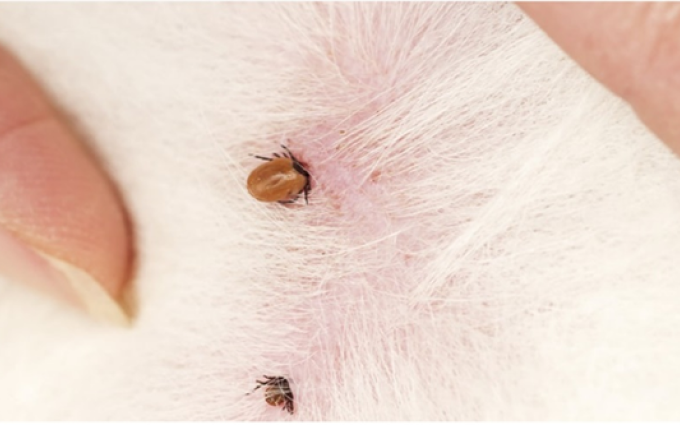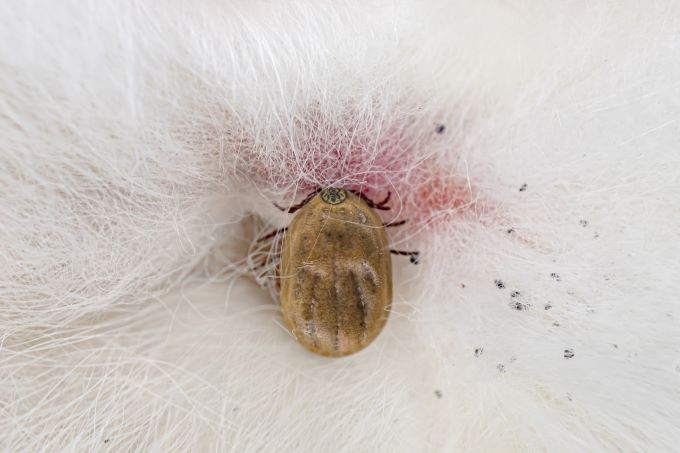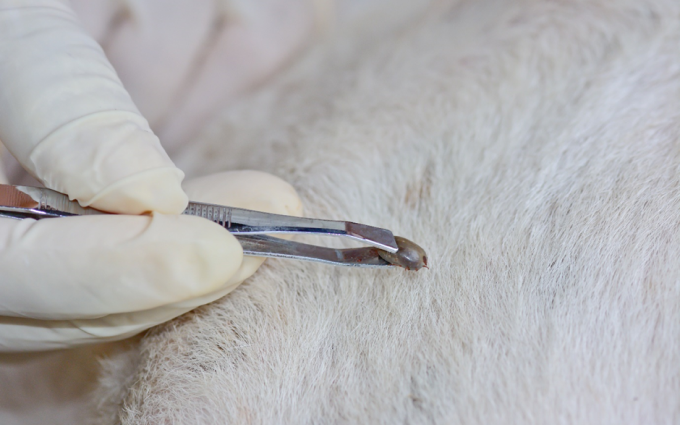Ticks on dogs
When you own a pet in New Zealand, it is important to protect them from ticks.
Like fleas, ticks are blood sucking parasites, that attach to the skin. Ticks are widespread parasites that affect dogs and cats globally and New Zealand is no exception. Read on to see what to do if you find a tick on your dog.

What do dog ticks look like?
Ticks don’t all look the same and their appearance may change throughout their life cycle. In order to recognise ticks you should be familiar with:
- the appearance of dog ticks
- what a tick bite looks like on a dog
- what an embedded tick on a dog looks like
Ticks on dogs are usually the size of an apple seed before feeding. Once they latch onto the skin and consume a blood meal from their host, ticks become ‘engorged’ and increase in size.
At this stage, they can grow as large as your little fingernail. Ticks can sometimes be confused with skin tags or nipples so if you’re uncertain whether it’s a tick, it’s best to consult your veterinarian.

Types of ticks on dogs in New Zealand
Cattle Tick: The main tick infesting dogs in New Zealand is known as the cattle tick and is more prevalent in coastal regions and the upper North Island.
Brown Dog Tick: On rare occasions the brown dog tick has been found on dogs in New Zealand, but it has been quickly eradicated under biosecurity protocols.

How do dogs get ticks?
Ticks commonly find their way onto dogs during outdoor activities. Ticks follow a process called 'questing' to locate a host. This involves moving up low grass or shrubs and waiting for a potential host to pass by. Ticks are sensitive to the heat and carbon dioxide that dogs exhale, which signals the presence of a suitable host nearby. Ticks can get on dogs throughout the year in New Zealand, but the highest risk of infestation is during spring and summer.

What are the symptoms caused by ticks on dogs and puppies?
Tick infestations can lead to skin irritation, discomfort, abscesses and even anaemia in young puppies. If you observe any symptoms of a tick bite in your dog, seek prompt veterinary care.

Is it possible for humans to get ticks from dogs?
While humans can also be bitten by ticks, they typically acquire them while walking through vegetation rather than from direct contact with dogs.

How to Detect Ticks on Dogs
Ticks can be challenging to locate. They are often found around the head and neck area, but they can also be anywhere on the body. If you live in or travel to a known tick region, it's a good idea to check your dog thoroughly after walks during the higher risk periods of spring and summer. Gently run your fingertips through your dog's coat, pressing against the skin, and feel for any bumps.

What to do when you find a tick?
Ticks can be removed with fingers, tweezers or a tick removal device. Grasp the tick near your dog’s skin (at the tick’s mouthparts), twist the tick, and then gently pull it away from the skin. Be careful not to squeeze the tick’s body.

Strategies to protect your dog against ticks:
- Treat your dog with an appropriate tick control product
- Reduce your dog’s exposure to ticks in the environment. Ticks favour habitats with areas of vegetation, such as forests and fields. They may also be found in suburban areas, particularly those with lots of vegetation. It is therefore a good idea to remove leaf litter and keep lawns mown.